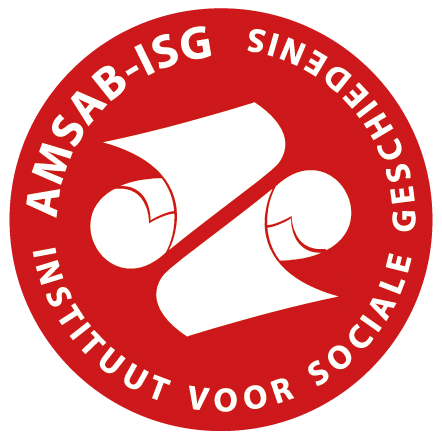Le livre Malerei. Fotographie. Film (« Peinture. Photographie. Film ») du peintre et photographe László Moholy-Nagy paraît en Allemagne en 1925. Il s’agit du premier livre théorisant les principes du courant photographique de la « Nouvelle Vision ». En voici quelques critères : perspectives et cadrages inhabituels, lignes obliques, contrastes forts, inversions positif/négatif, solarisation, montage photographique, gros plans ou détails singuliers. Le répertoire de sujets est très large, allant du reportage à la photographie abstraite et expérimentale. L’influence de ces principes sur les photographies de Cami et Sasha Stone est notable. Sur les quelques exemples réunis ici, l’usage d’une perspective en plongée (du haut vers le bas) ou en contre-plongée (du bas vers le haut) est notable. De même, sur l’affiche électorale du Parti ouvrier belge, le montage photographique combine un usage de la contre-plongée dans les portraits, le photomontage et une construction oblique dynamisant les regards des candidats. Cette même grille d’analyse peut être transposée à nombre de photographies de Cami et Sasha Stone. Ils usent abondamment des principes de la Nouvelle Vision dans leurs images. Avec ces quelques éléments en tête, il est intéressant de regarder leur production et de s’interroger sur ces principes artistiques qui construisent une partie de leurs photographies.
Ils s’attardent par exemple sur des détails singuliers d’une construction, telle l’arche métallique d’un pont, ou les éléments techniques d’une installation, comme le mécanisme de l’observatoire de la tour Einstein de Potsdam. Ils n’hésitent par ailleurs pas à photographier des bâtiments au moyen d’angles de prises de vue audacieux. Dans ce même esprit, ils usent de plans très rapprochés pour réaliser des « natures mortes » d’objets du quotidien. Leurs images, plutôt que de restituer une vue objective, offrent alors un point de vue nouveau.
Les Stone font également des photomontages à plusieurs reprises. Sasha Stone réalise une série de photomontages sur le thème de « Si Berlin était… ». Il y combine des vues de la capitale allemande avec celles d’autres villes au caractère généralement touristique. Il obtient alors des visions utopiques de Berlin entourée de montagnes (Si Berlin était Innsbruck) ou au bord de la mer (Si Berlin était Biarritz). Afin que l’illusion fonctionne, des éléments d’architecture ou de paysage aisément reconnaissables sont distillés dans les images : le trafic et le tram berlinois avec, en fond, les montagnes autrichiennes d’Innsbruck ; le nom d’une station de métro berlinoise combiné au bord de mer de Biarritz. La série « Si Berlin était… » s’inspire de cartes postales touristiques du début du XXe siècle, notamment une série publiée en 1905 intitulée Si Londres était Venise. La carte postale touristique, par essence, évoque le lieu depuis lequel elle est envoyée. De la même manière, dans les photographies de Sasha Stone, il devait être possible d’identifier, sans les légendes, la ville de Berlin et le caractère anachronique du montage.
Sasha Stone combine dans un autre photomontage le portrait du magnat du pétrole John D. Rockefeller avec une succession de derricks pétroliers et une fumée sombre et dense qui en émane. Il met ici en pratique des notions qu’il développe dans un article publié dans le mensuel Das Kunstblatt en 1928. Il y évoque les possibilités des photomontages qui permettent de créer des liens formels, dynamiques ou sémantiques par la combinaison de plusieurs images. Dans le cas du montage avec le visage de Rockefeller, il est évident que la volonté est d’identifier l’homme à son activité professionnelle. Une version différente de ce montage est publiée à l’époque avec la légende : « John D. Rockefeller, quatre-vingt-dix ans, le plus puissant magnat du pétrole au monde, le premier à avoir reconnu le pouvoir de transformation du pétrole et à l'avoir mis au service de ses objectifs » (traduit de l’allemand). Le célèbre photomonteur allemand antifasciste John Heartfield réalise la même année que Sasha Stone des montages utilisant des motifs similaires (un visage et des derricks pétroliers) pour illustrer la couverture du roman Oil ! d’Upton Sinclair. Ce livre, publié en 1926, dénonce les excès de l’industrie pétrolière et du capitalisme. Stone, à l’instar d’Heartfield, recourt ici au photomontage comme outil critique. Le visage de Rockefeller surplombe l’image, son habit blanchi à l’extrême contraste avec la fumée noire du pétrole. L’accumulation des puits d’extraction « conquiert » l’espace de l’image dont l’ouvrier est totalement absent. Le photomontage allie ces motifs pour signifier un capitalisme expansif et exploitant la masse laborieuse invisibilisée.
Galerie





